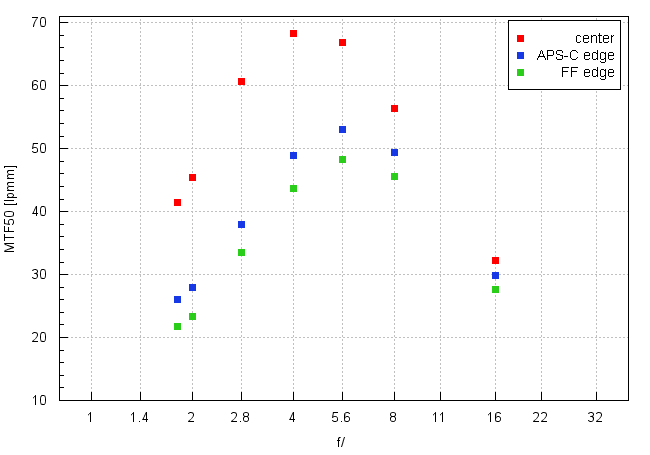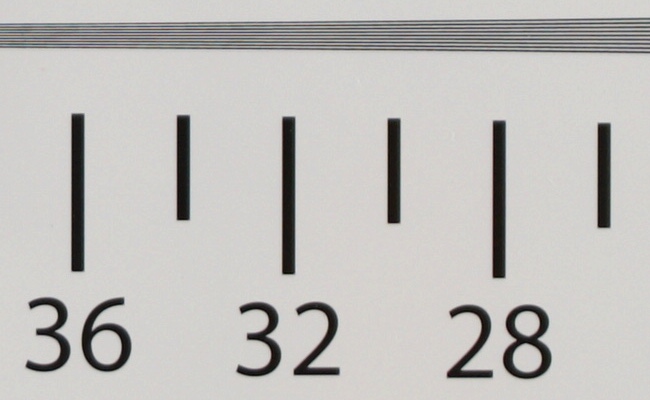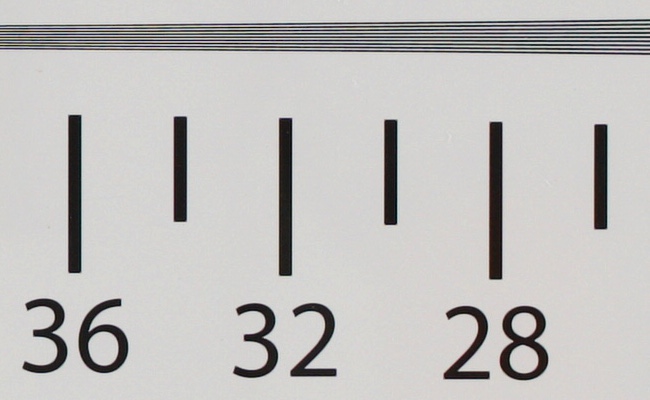Viltrox PFU RBMH 20 mm f/1.8 ASPH
4. Image resolution
Let’s check how the tested Viltrox PFU RBMH 20 mm f/1.8 ASPH compares – its performance in the frame centre, on the edge of the APS-C sensor and on the edge of full frame presents a graph below.

Please Support UsIf you enjoy our reviews and articles, and you want us to continue our work please, support our website by donating through PayPal. The funds are going to be used for paying our editorial team, renting servers, and equipping our testing studio; only that way we will be able to continue providing you interesting content for free. |
- - - - - - - - - - - - - - - - - - - - - - - - - - - - - - - - - - - - - - - - - - - - - - - -
The performance in the frame centre should be assessed very positively indeed. Already at the maximum relative aperture MTFs exceed a level of 40 lpmm so images are fully useful. On stopping down the aperture the resolution improves very quickly and its maximum, amounting to 68.3 lpmm, the lens reaches by f/4.0. It is a truly excellent result even if the direct rival of this lens, the Tokina Firin 2/20, fared significantly better – both at the maximum relative aperture and on stopping down.
The performance on the edge of the frame, however, is a noticeable problem for the tested lens. On the edge of the APS-C sensor and in close proximity of the maximum relative aperture the images are not especially useful and in order to get that much you have to close the lens down to near f/2.8. The edge of full frame is even weaker, as the lens has to be stopped down to near f/3.5. The peak of its possibilities the tested lens reaches by f/5.6 where its MTFs are on a level of about 50 lpmm.
While comparing these results to the performance of the Tokina 2/20 we can say that the rival lens prevailed on the edge of the APS-C detector but on the edge of full frame the Viltrox had higher resolution results.
To sum up the Viltrox lost its duel with the rival Tokina but its position is hardly hopeless; it still offers an excellent image quality in the frame centre remaining faster and noticeably cheaper than the Tokina (the Vlitrox now is priced at about $486). At the end of this chapter, traditionally we present crops taken from photos of our resolution testing chart; these were saved in JPEG format along with RAW files used by us for the analysis presented above.
| A7R II, JPEG, f/1.8 |
 |
| A7R II, JPEG, f/4.0 |
 |






